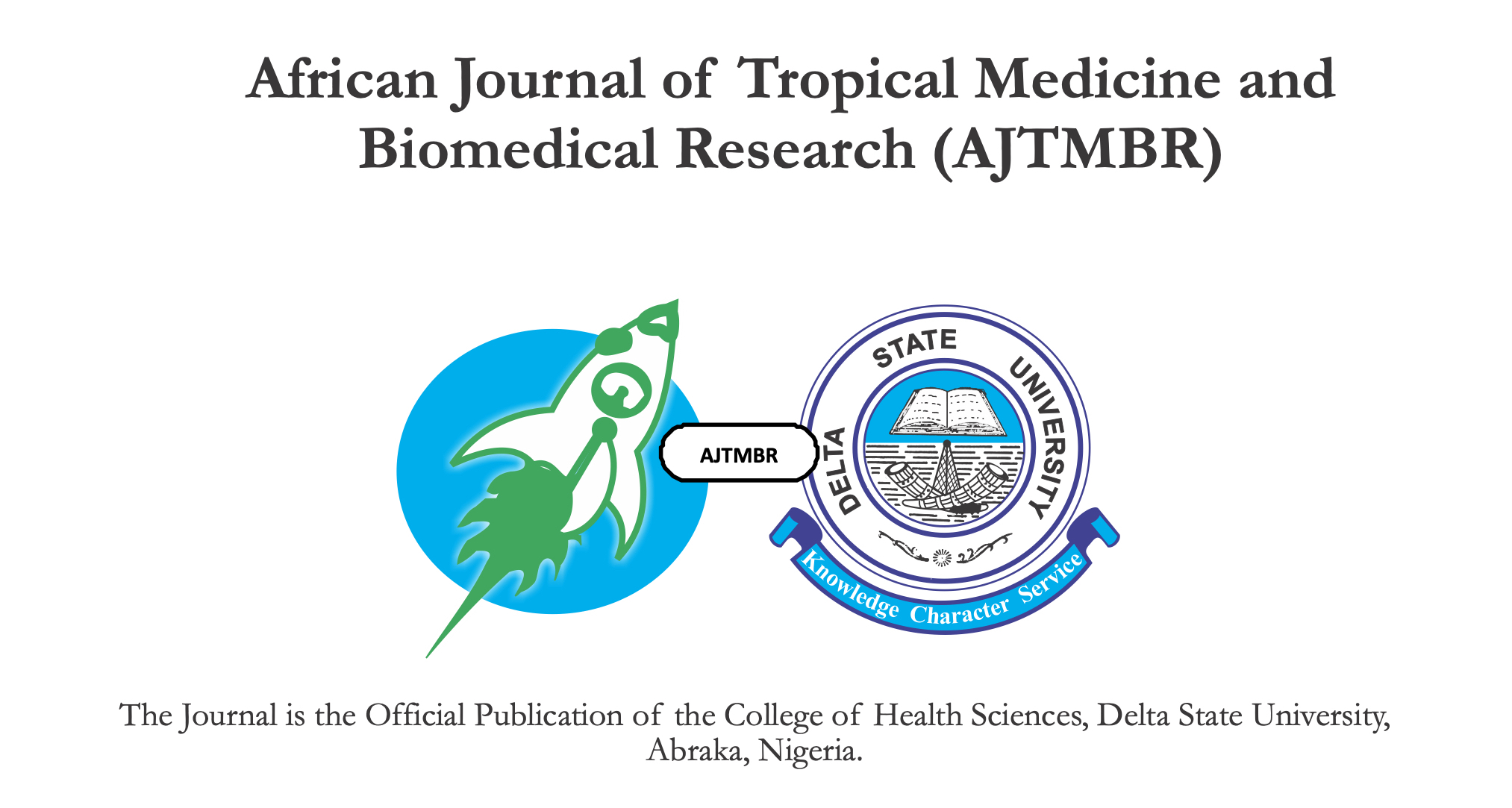Role of Tympanometry in the Diagnosis of Hearing Impairment in Children with Otitis Media and Effusion
Keywords:
Tympanometry, Otitis Media with Effusion, Hearing ImpairmentAbstract
Background: To determine if Tympanometry can be used to diagnose hearing impairment in children with otitis media with effusion.
Method: A six month prospective study of school children aged between 5 and 7 years in the selected primary schools. Techniques of data collection included otoscopy, tympanometry and screening audiometry.
Results: Showed that tympanometry correctly identified cases without hearing impairment. Conclusion: That tympanometry may be suggested as screening tool for younger children with Otitis Media with Effusion especially in developing countries thereby reducing cost implications tor these patients.
References
Dempster JH. Mackenzie KTympanometry in the detection of hearing impairments associated with otitis media with effusion. Clin Otolaryngol Allied Sciences 1991 Apr(2): 157-9
F.O. Ogisi Audiometric and Tympanometric screening in Nigerian School children. A comparative study. Asian Journal of clinical sciences 1988; 8 (3): 87-91
S.G. Kazanas, A.R.Maw Tympanometry, Stapedius reflex and hearing impairment in children with Otitis Media with Effusion. 1994 Acta Otolaryngologica Vol 114:410-414
Fiellau-Nikolajsen M. Tympanometric Prediction of the Magnitude of Hearing loss in Pre-School Children with Secretory Otitis Media. 1983 Scand Audiol Suppl 17:68-72

Downloads
Published
Issue
Section
License

This work is licensed under a Creative Commons Attribution-NoDerivatives 4.0 International License.
Key Terms:
- Attribution: You must give appropriate credit to the original creator.
- NonCommercial: You may not use the material for commercial purposes.
- ShareAlike: If you remix, transform, or build upon the material, you must distribute your contributions under the same license as the original.
- No additional restrictions: You may not apply legal terms or technological measures that legally restrict others from doing anything the license permits.
For full details, please review the Complete License Terms.



